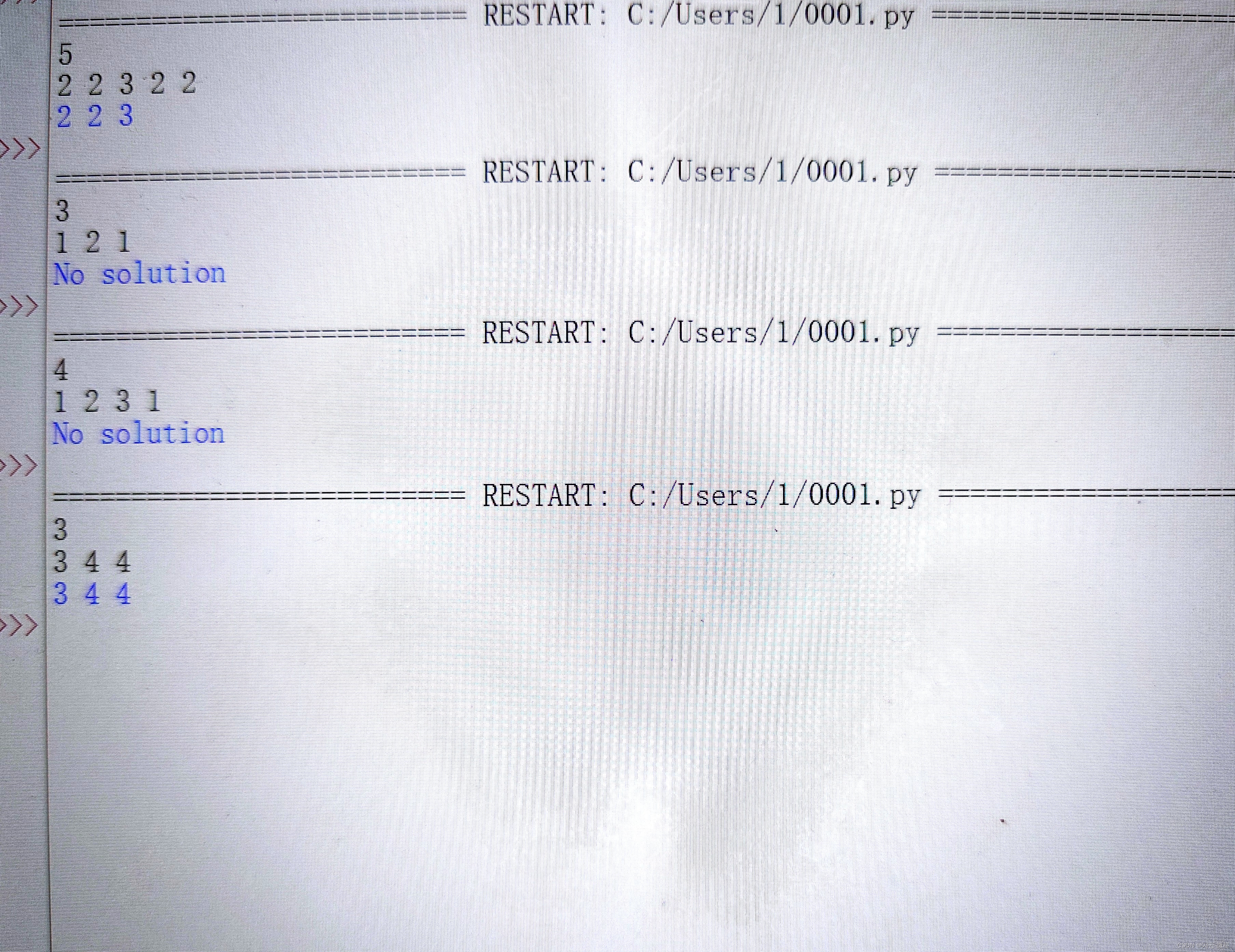设置响应头
resp.setHeader("key","nihao");//推荐使用英文 中文会乱码
案例:模拟登录


jdbc.properties
driverClass=com.mysql.jdbc.Driver
url=jdbc:mysql://localhost:3306/test?verifyServerCertificate=false&useSSL=false
name=root
password=123456JDBCUtil
public class JDBCUtil {
static String driverClass=null;
static String url=null;
static String name=null;
static String password=null;
static{
Properties properties=new Properties();
InputStream is=null;
try {
is=JDBCUtil.class.getClassLoader().getResourceAsStream("jdbc.properties");
properties.load(is);
driverClass=properties.getProperty("driverClass");
url=properties.getProperty("url");
name=properties.getProperty("name");
password=properties.getProperty("password");
} catch (IOException e) {
throw new RuntimeException(e);
}
}
public static Connection getConn(){
Connection conn=null;
try {
Class.forName(driverClass);
conn= DriverManager.getConnection(url,name,password);
} catch (Exception e) {
throw new RuntimeException(e);
}
return conn;
}
private static void closeConn(Connection conn){
if(conn!=null){
try {
conn.close();
} catch (SQLException e) {
throw new RuntimeException(e);
}finally{
conn=null;
}
}
}
private static void closePs(PreparedStatement ps){
if(ps!=null){
try {
ps.close();
} catch (SQLException e) {
throw new RuntimeException(e);
}finally{
ps=null;
}
}
}
private static void closeRs(ResultSet rs){
if(rs!=null){
try {
rs.close();
} catch (SQLException e) {
throw new RuntimeException(e);
}finally{
rs=null;
}
}
}
public static void release(Connection conn,PreparedStatement ps,ResultSet rs){
closeRs(rs);
closePs(ps);
closeConn(conn);
}
public static void release(Connection conn,PreparedStatement ps){
closePs(ps);
closeConn(conn);
}
}
T_user
需要实现序列化 Serializable接口
public class T_user implements Serializable{
private int id;
private String name;
private String pwd;
public int getId() {
return id;
}
public void setId(int id) {
this.id = id;
}
public String getName() {
return name;
}
public void setName(String name) {
this.name = name;
}
public String getPwd() {
return pwd;
}
public void setPwd(String pwd) {
this.pwd = pwd;
}
@Override
public String toString() {
return "T_user{" +
"id=" + id +
", name='" + name + '\'' +
", pwd='" + pwd + '\'' +
'}';
}
}
UserDao
public interface UserDao {
public T_user login(String uname, String pwd);
}UserDaoImpl
public class UserDaoImpl implements UserDao {
//处理数据连接数据库
Connection conn=null;
PreparedStatement ps=null;
ResultSet rs=null;
T_user user=null;
@Override
public T_user login(String uname, String pwd) {
try {
conn= JDBCUtil.getConn();
String sql="select * from t_user where uname=? and pwd=?";
ps=conn.prepareStatement(sql);
ps.setString(1,uname);
ps.setString(2,pwd);
rs=ps.executeQuery();
while(rs.next()){
String uname1 = rs.getString("uname");
String pwd1 = rs.getString("pwd");
user=new T_user();
user.setName(uname1);
user.setPwd(pwd1);
}
} catch (SQLException e) {
throw new RuntimeException(e);
}finally{
JDBCUtil.release(conn,ps,rs);
}
return user;
}
}LoginService
@WebServlet("/LoginService")
public class LoginService extends HttpServlet {
private UserDao UserDao;
public LoginService() {
UserDao=new UserDaoImpl();
}
@Override
protected void service(HttpServletRequest req, HttpServletResponse resp) throws ServletException, IOException {
req.setCharacterEncoding("utf-8");
resp.setContentType("text/html;charset=utf-8");
String uname = req.getParameter("uname");
String pwd = req.getParameter("pwd");
System.out.println("uname:" + uname + "\tpwd:" + pwd);
T_user user=UserDao.login(uname,pwd);
if(user!=null){
resp.getWriter().write("<font color='red' size=30>登录成功,欢迎"+user.getName()+"回来!</font>");
}else{
resp.getWriter().write("<font color='red' size=30>登录失败,账号或密码错误!</font>");
}
}
}login.html
<!DOCTYPE html>
<html lang="en">
<head>
<meta charset="UTF-8">
<title>Title</title>
</head>
<body>
<form action="LoginService" method="post">
用户名:<input type="text" name="uname">
密码:<input type="password" name="pwd">
爱好:<input type="checkbox" name="hobby" value="抽烟">抽烟
<input type="checkbox" name="hobby" value="喝酒">喝酒
<input type="checkbox" name="hobby" value="烫头">烫头
<input type="checkbox" name="hobby" value="蹦迪">蹦迪
<input type="submit" value="提交">
</form>
</body>
</html>请求转发与重定向
请求转发
特点:路径不会发生改变
缺点:每次刷新页面 就相当于重新提交
请求转发 在登录场景 和 转账场景不能使用
req.getRequestDispatcher("success.html").forward(req,resp);重定向
缺点:不能携带数据
resp.sendRedirect("success.html");servlet跳转servlet
//将数据以键值对的方式存入
req.setAttribute("user", user);//key,value
req.getRequestDispatcher("HanderServlet").forward(req, resp);@WebServlet("/HanderServlet")
public class HanderServlet extends HttpServlet {
@Override
protected void service(HttpServletRequest req, HttpServletResponse resp) throws ServletException, IOException {
T_user user = (T_user)req.getAttribute("user");//利用getAttribute获取值
resp.getWriter().write("<h1>系统提示</h1>");
resp.getWriter().write("<hr/>");
resp.getWriter().write("<font color='red'>欢迎,"+user.getUname()+"登录成功!</font>");
}
}Cookie
cookie技术是浏览器端的数据存储技术 解决了同一个工程下不同请求需要使用相同数据的问题 我们把请求需要共享的请求数据 存储在浏览器端 避免用户进行重复书写请求数据
特点:适合少量数据 键值对 不安全
注意:一个cookie对象存储一条数据 多条数据 可以创建多个cookie对象进行存储
作用:Cookie技术解决不同请求发送之间的数据共享问题
Cookie的使用
@WebServlet("/LoginSerlet")
public class LoginUser extends HttpServlet {
private com.dao.UserDao UserDao;
public LoginUser() {
UserDao = new UserDaoImpl();
}
@Override
protected void service(HttpServletRequest req, HttpServletResponse resp) throws ServletException, IOException {
req.setCharacterEncoding("UTF-8");
resp.setContentType("text/html;charset=UTF-8");
String uname = req.getParameter("uname");
String pwd = req.getParameter("pwd");
System.out.println("uname:" + uname + "\tpwd:" + pwd);
T_user user=UserDao.login(uname,pwd);
if(user!=null){
//将数据存储到Cookie当中
Cookie c1=new Cookie("name",user.getUname());
Cookie c2=new Cookie("pwd",user.getPwd());
//设置三天免登录 默认不设置时间 关闭浏览器立即失效
c1.setMaxAge(24*3600*3);
//把存储了登录信息的Cookie 通过响应resp 响应到浏览器中
resp.addCookie(c1);
resp.addCookie(c2);
resp.sendRedirect("success");
}else{
req.getRequestDispatcher("login.html").forward(req, resp);
}
}
}@WebServlet("/success")
public class LoginServlet extends HttpServlet {
@Override
protected void service(HttpServletRequest req, HttpServletResponse resp) throws ServletException, IOException {
req.setCharacterEncoding("UTF-8");
resp.setContentType("text/html;charset=UTF-8");
//通过浏览器携带的cookie name=admin pwd=123456 找tomcat中cookie对象的数据
//获取cookie
Cookie[] cookies = req.getCookies();//键值对
String value=null;
//遍历所有cookie 找cookie的key是user的cookie对象
for (Cookie c : cookies) {
if("name".equals(c.getName())) {
value = c.getValue();
System.out.println("name:"+value);
}
if("pwd".equals(c.getName())) {
value = c.getValue();
System.out.println("pwd:"+value);
}
}
resp.getWriter().write("<h1>系统提示</h1>");
resp.getWriter().write("<hr/>");
resp.getWriter().write("<font color='red'>欢迎,"+value+"登录成功!</font>");
}
}
中央仓库(jar包下载)
Maven Repository: Central (mvnrepository.com)![]() https://mvnrepository.com/repos/central
https://mvnrepository.com/repos/central
Session
首先创建Session Session在tomcat容器中 有且只有一个
Session默认时间30分钟 在开发中一般都使用Session存储用户登录信息
@WebServlet("/SessionLogin")
public class SessionLogin extends HttpServlet {
UserService service;
public SessionLogin() {
service = new UserServiceImpl();
}
@Override
protected void service(HttpServletRequest req, HttpServletResponse resp) throws ServletException, IOException {
req.setCharacterEncoding("UTF-8");
resp.setContentType("text/html;charset=UTF-8");
String uname = req.getParameter("uname");
String pwd = req.getParameter("pwd");
T_stu stu = service.login(uname, pwd);
if(stu!=null){
//创建session
HttpSession session = req.getSession();
//将数据以键值对的方式存入
session.setAttribute("stu", stu);
resp.sendRedirect("SessionUser");
}else{
req.getRequestDispatcher("login.html").forward(req, resp);
}
}
}
@WebServlet("/SessionUser")
public class SessionUser extends HttpServlet {
@Override
protected void service(HttpServletRequest req, HttpServletResponse resp) throws ServletException, IOException {
req.setCharacterEncoding("UTF-8");
resp.setContentType("text/html;charset=UTF-8");
//创建session
HttpSession session = req.getSession();
//获取数据
T_stu stu =(T_stu)session.getAttribute("stu");
resp.getWriter().write("<h1>系统提示</h1>");
resp.getWriter().write("<hr/>");
resp.getWriter().write("<h1>登录成功,欢迎"+stu.getUname()+"登录!</h1>");
resp.getWriter().write("<a href='exit'>退出</a>");
}
}
@WebServlet("/exit")
public class SessionExit extends HttpServlet {
@Override
protected void service(HttpServletRequest req, HttpServletResponse resp) throws ServletException, IOException {
req.setCharacterEncoding("UTF-8");
resp.setContentType("text/html;charset=UTF-8");
HttpSession session = req.getSession();
//关闭session
session.invalidate();
resp.sendRedirect("login.html");
}
}ServletContext(上下文对象携带数据)
生命周期 程序启动到结束
作用域 在项目内
创建
//第一种创建方式 有就创建 没有就获取
ServletContext sc1= this.getServletContext();
//第二种
ServletContext sc2=req.getSession().getServletContext();
//第三种
ServletContext c3=this.getServletConfig().getServletContext();得到
ServletContext sc = this.getServletContext();
String a =(String) sc.getAttribute("a");
String b =(String) sc.getAttribute("b");
String c =(String) sc.getAttribute("c");
resp.getWriter().write("a:"+a+"b:"+b+"c:"+c);删除
ServletContext sc = this.getServletContext();
//删除b
sc.removeAttribute("b");读取配置文件的配置信息
<?xml version="1.0" encoding="UTF-8"?>
<web-app xmlns="http://xmlns.jcp.org/xml/ns/javaee"
xmlns:xsi="http://www.w3.org/2001/XMLSchema-instance"
xsi:schemaLocation="http://xmlns.jcp.org/xml/ns/javaee http://xmlns.jcp.org/xml/ns/javaee/web-app_4_0.xsd"
version="4.0">
<context-param>
<param-name>name</param-name>
<param-value>木舟</param-value>
</context-param>
</web-app>String city = sc.getInitParameter("city");
System.out.println(city);


















